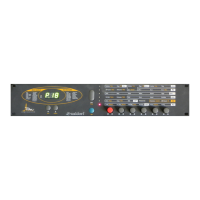User’s Manual Pulse • PulsePlus
9
4. Introduction
This handbook was written to help you become familiar with the Waldorf Pulse. It will also
help experienced users with routine tasks.
To avoid confusion, the terminology in this manual is based on the Pulse parameter names.
You will find a glossary at the end of the manual; it explains the various terms used herein.
We also used a uniform set of symbols to alert you to topics of particular interest or
significance. Important terms are highlighted in bold letters.
4.1 Symbols
Caution: The comments that follow this symbol will help you avoid errors and
malfunctions.
☞ Instructions: Follow these guidelines to execute a desired function.
Info: Additional information on a given topic.
Pulse Plus: Paragraphs marked with this symbol refer to the additional parameters
and functions of the Pulse Plus.
4.2 Highlighted Control Features and Parameters
All of the Pulse's keys, pots and parameters are highlighted in bold letters throughout the
manual. Also every control element has an unique position no. 햲...헃 which refers to the
diagrams on page 3.
Example: • Press the Mode key.
The Pulse's diverse modes and parameters are illustrated in a depiction of the display.
A given parameter's value range is indicated from low to high, with the two values
separated by three dots.
Example: Semitone -48...+48
Example: Program 72 is active.

